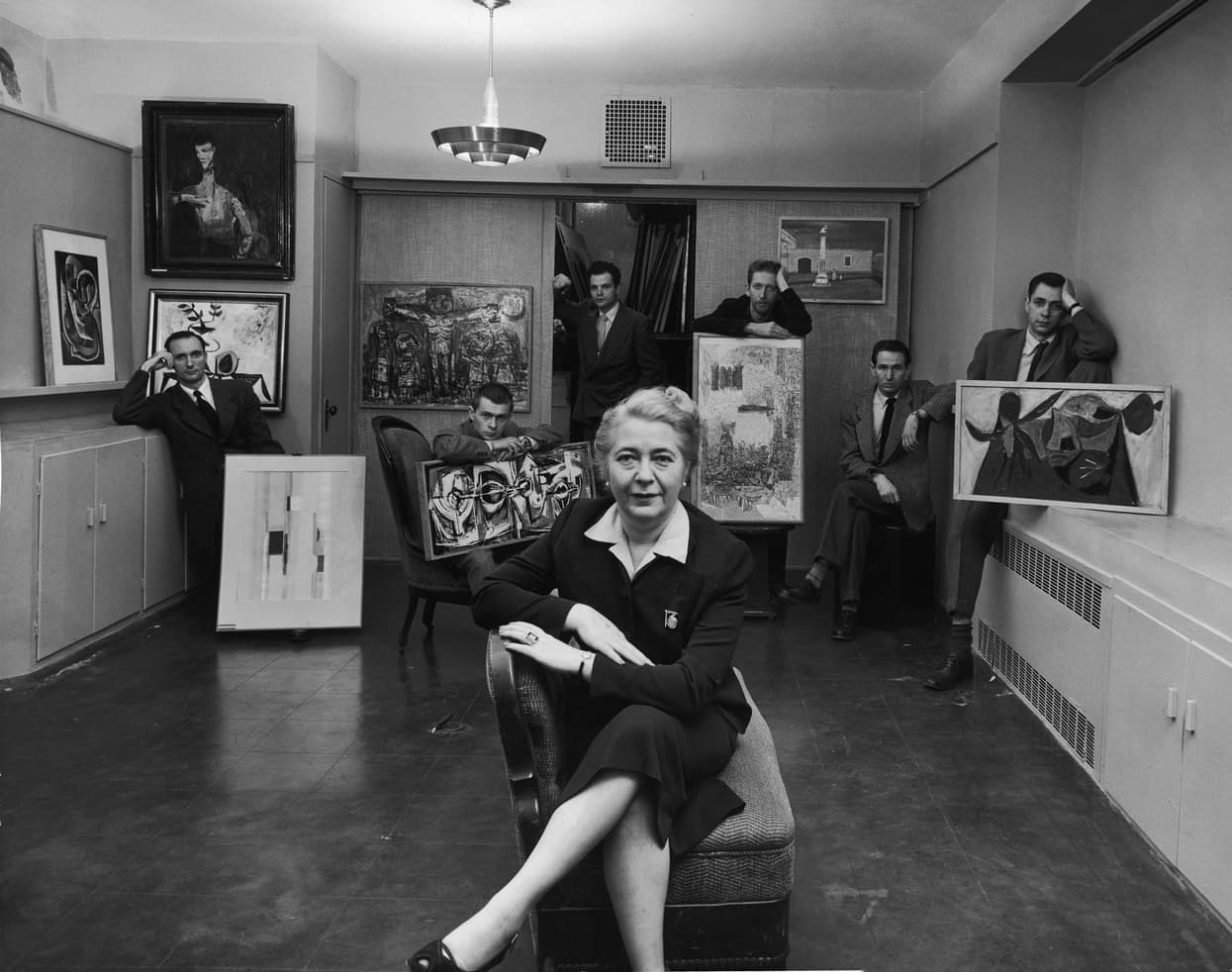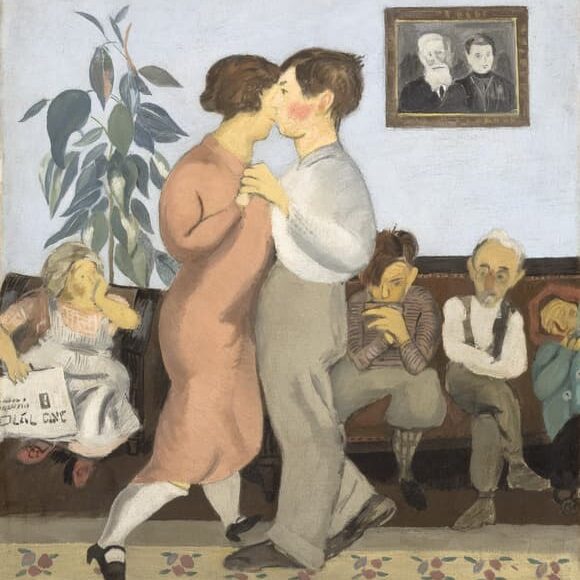First Exhibition Exploring the Remarkable Career of Influential American Art Dealer Edith Halpert

Works by Artists Halpert Championed Including Stuart Davis, Yasuo Kuniyoshi, Jacob Lawrence, Elie Nadelman, Georgia O’Keeffe, Ben Shahn, Charles Sheeler, and Others on ViewEdith Halpert and the Rise of American ArtOctober 18, 2019-February 9, 2020Press Preview: Wednesday, October 16, 2019, 10 am to 1 pmRemarks at 10:30 am; RSVP: [email protected]
New York, NY, October 10, 2019— The Jewish Museum will present Edith Halpert and the Rise of American Art, the first exhibition to explore the remarkable career of Edith Gregor Halpert (1900-1970), the influential American art dealer and founder of the Downtown Gallery in New York City. A pioneer in the field and one of New York’s first female art dealers, Halpert propelled American art to the fore at a time when the European avant-garde still enthralled the world. The artists she supported — Stuart Davis, Jacob Lawrence, Georgia O'Keeffe, Yasuo Kuniyoshi, Ben Shahn, and Charles Sheeler key among them — became icons of American modernism. Halpert also brought vital attention to overlooked nineteenth-century American artists, such as William Michael Harnett, Edward Hicks, and Raphaelle Peale, as well as little-known and anonymous folk artists. With her revolutionary program at the Downtown Gallery, her endless energy, and her extraordinary business acumen, Halpert inspired generations of Americans to value the art of their own country, in their own time.
The exhibition, on view at the Jewish Museum from October 18, 2019 through February 9, 2020, will feature 100 works of American modern and folk art, including paintings, sculptures, and prints by artists such as Davis, Lawrence, O’Keeffe, Kuniyoshi, Shahn, and Sheeler, as well as Arthur Dove, Elie Nadelman, and Marguerite and William Zorach, among others, and prime examples of American folk art portraits, weathervanes, and trade signs. Along with major artworks that were exhibited at and sold through the Downtown Gallery, highlights from Halpert’s acclaimed personal collection of both modern and folk art, reassembled for the first time since its landmark sale in 1973, will also be on view.
Born to a Jewish family in Odessa, Russia (now Ukraine), Halpert opened the Downtown Gallery in 1926, at the age of 26, at 113 West 13th Street, the first commercial art space in bohemian Greenwich Village. She deliberately promoted a diverse group of living American artists, fundamentally shifting the public's opinion of whose voices mattered in the art world. Though an outsider in many respects — as a woman, an immigrant, and a Jew — Halpert was, for over 40 years, the country's most resolute champion of its creative potential and the defining authority of the American art landscape. Not only did her trailblazing career pave the way for the next generation of women leaders in the art world, Halpert's inclusive vision continues to inform our understanding of American art today as being pluralistic, generous in its parameters, and infused with idealism.
The Downtown Gallery quickly attracted important clients. Abby Aldrich Rockefeller, founder of The Museum of Modern Art, under Halpert’s tutelage became a key patron to many modern artists and later an enthusiastic collector of American folk art. Halpert became an influential advisor to other art patrons who, like Rockefeller, went on to build new museums or donate major collections of American art to public institutions across the country. Halpert’s circle of collectors included Duncan Phillips, founder of the Phillips Collection in Washington, DC; William H. Lane, the great benefactor of the Museum of Fine Arts, Boston; and Electra Havemeyer Webb, who established the Shelburne Museum in Vermont.
Although she enjoyed these relationships, Halpert never lost sight of her most important clients: everyday men and women who simply loved art and wanted to live with it. Halpert’s influence, her eye, and her passion for American art became a guiding force in the cultural development of America’s heartland. Her mission, as she saw it, was to bring art within reach of average Americans. Her innovative sales tactics, which included affordable pricing and the option to buy on an installment plan, helped make American art accessible to a new class of collector. American art, she believed, belonged to the American people.
Halpert’s socially progressive values were on full display at her gallery. In addition to regularly presenting work by women, immigrants, and Jewish artists, the Downtown Gallery was the first major mainstream art space in New York City to consistently promote the work of African American artists, including Jacob Lawrence and Horace Pippin. When the Japanese American painter Yasuo Kuniyoshi was classified as an enemy alien during World War II, she mounted a defiant exhibition of his paintings in 1942. Later, as McCarthyism swept the nation, Halpert publicly defended her artists, proclaiming, “Works of art are not a dispensable luxury for any nation. We will have communism in art if Congress can control what we paint, and free and individual expression is stifled.” Her insistence that we support free expression and diversity of opinion, and that these are the defining features of American art and culture, has never been more timely or more relevant.
Almost as stunning as the achievement of her influential 40-year career is the speed with which her contributions have been forgotten. Her name is scarcely recognized today, even among art scholars. That she was a woman may have something to do with this historical erasure; throughout her life she was underestimated by her peers. The way she wielded influence was also a factor. Halpert’s accomplishments were often credited to others, particularly when she worked in tandem with important curators, collectors, and patrons.
Today, the continued strength of the American art market, nearly 100 years after Halpert first opened the Downtown Gallery, is a testament to her extraordinary vision and steadfast belief in the value of American art. But Halpert’s true legacy lies in the dozens of artists she discovered and sustained; in the many women art dealers and curators she inspired; and in the thousands of artworks that found their way through her into American public collections.
Edith Halpert and the Rise of American Art is organized by Rebecca Shaykin, Associate Curator, The Jewish Museum, New York. The exhibition is designed by Leslie Gill Architect (Leslie Gill, Ines Yupanqui). Exhibition graphic design is by pulp, ink. (Beverly Joel), and lighting is by Clint Ross Coller.
A free audio tour includes an introduction by Claudia Gould, Helen Goldsmith Menschel Director, The Jewish Museum; commentary by exhibition curator Rebecca Shaykin; and audio from a 1962-1963 Archives of American Art oral history interview of Edith Halpert.
Publication
In conjunction with the exhibition, the Jewish Museum and Yale University Press are publishing a 232-page, hardcover book, Edith Halpert, the Downtown Gallery, and the Rise of American Art, by Rebecca Shaykin with 271 color and black and white illustrations. The book will be available worldwide and at the Jewish Museum’s Cooper Shop for $50.00.
Public Programs
In conjunction with the exhibition, the Jewish Museum will present a series of public and family programs featuring speakers such as artists Mike Cloud, Louis Fratino, and Tschabala Self on November 7; performances featuring Theo Bleckmann on November 14 and Dynasty Handbag on November 21; and a family day on November 10.
Support
Edith Halpert and the Rise of American Art is made possible by the Henry Luce Foundation, Knapp Family Foundation, Joyce & Daniel Cowin Foundation, National Endowment for the Arts, a gift from the estate of Gaby and Curtis Hereld, Alice L. Walton Foundation, Wyeth Foundation for American Art, and Marina and Andrew Levin.
Additional support is provided through The Skirball Fund for American Jewish Life Exhibitions, Horace W. Goldsmith Exhibitions Endowment Fund, The Leon Levy Foundation, the Alfred J. Grunebaum & Ruth Grunebaum Sondheimer Memorial Fund, and the Joan Rosenbaum Exhibition Endowment. In-kind support is provided by Christie's. The publication is made possible, in part, by the Dorot Foundation. The Mobile Tour is supported by Bloomberg Philanthropies.
Press contacts
Anne Scher, 212.423.3271 or [email protected]
Daniela Stigh, 212.423.3330 or [email protected]
[email protected] (general inquiries)













